Mar . 15, 2024 12:31 Back to list
POPULAR MATERIALS USED FOR FORMWORK
I. POPULAR FORMWORK MATERIALS
The selection of materials suitable for formwork should be based on the price, safety during construction, and the quality required in the finished product. Approval of formwork materials by the engineer/architect, if required by the contract documents, should be based on how the quality of materials affects the quality of finished work.
Materials used for the construction of concrete formwork range from traditional materials such as timber, steel, aluminum, and plywood to nontraditional materials such as fiberglass. The systems used can be a combination of two materials. Wood products are the most widely used material for formwork.
1/ Timber
Timber is widely used for many construction applications including concrete formwork. Timber is harvested from trees and is classified as hardwood and softwood. Hardwood comes from trees that have broad leaves such as oaks, maples, and basswood. Softwood comes from trees that have needle-like leaves such as pines, cedars, and firs. Softwoods are most commonly used in the construction of formwork.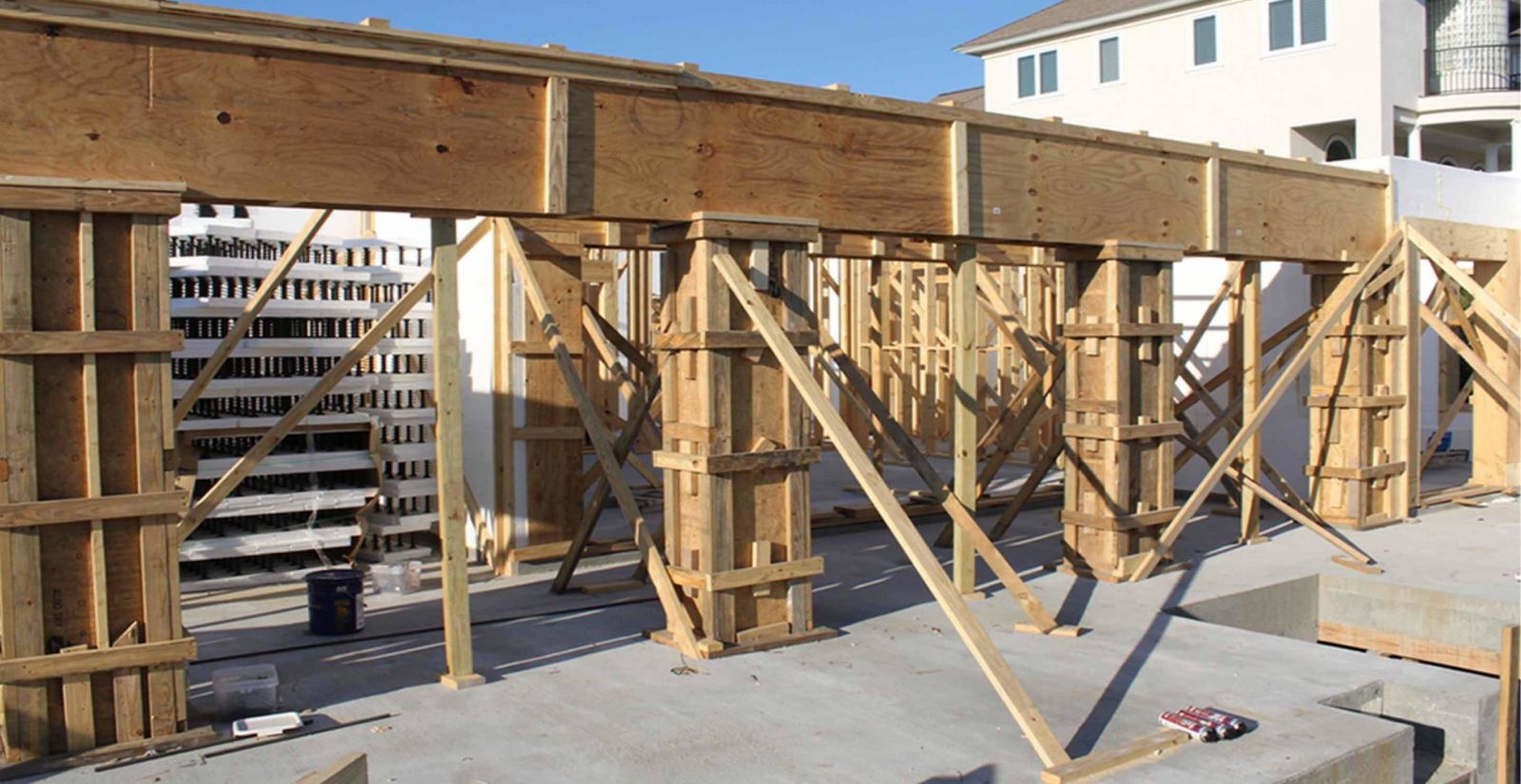
1.1 Advantages
- Timber can even make it perfect in any size you want.
- Timber is extremely lightweight so that it can be managed rapidly.
- Timber is indeed a good thermal resistance, which helps prevent concrete harm in colder areas.
- The fabrication process for that kind of sort of formwork is easily understandable, so it does not involve skill labor.
1.2 Disadvantages
- Dry timber contains moisture from concrete, which also reduces the workability of the material.
- Timber formwork should only be modified 5 to 6 times.
- Timber with such a higher moisture content (<= 20%), wet concrete would then reduce as well as cement slurry would then spill.
2/ Plywood
Plywood is a manufactured wood product consist a number of veneer sheets, or plies Type of plywood can be grouped as exterior and interior. For formwork, exterior plywood is used. The adhesive used to bond the piles in the manufacturing of exterior plywood is watertight and gives a maximum number of reuses. The plywood industry manufactures special plywood called Ply form specifically for use in forming concrete structures.
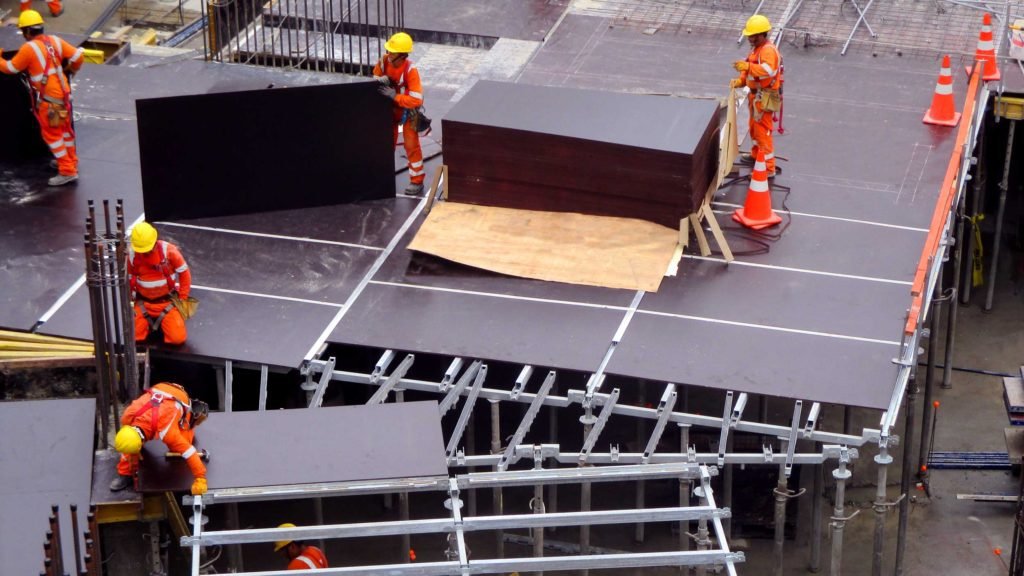
Film Faced Plywood - Plywood formwork
2.1 Advantages
- Plywood can also be cut into the required size easily.
- Plywood is Strong, durable, and light in weight.
- Provides a smooth finish on the surface.
- Very Large size plywood sheets are available which makes the construction of formwork quicker and easier.
- Curved formworks can also be prepared using plywood.
- When compared to timber, it gives more number of reuses.
2.2 Disadvantages
- When compared to timber it is costly.
- Thin plywood sheets cannot sustain the weight of concrete they may bow out if proper thickness is not provided.
3/ Steels
The initial cost of metal formwork is more than timber formwork but the number of reuses of metal formwork is higher than that of timber. In the long run metal formwork can be economical. In heavy construction works metal formwork may require a lifting mechanism to handle the formwork panels or props. Steel or aluminum or magnesium is the most widely used metals.
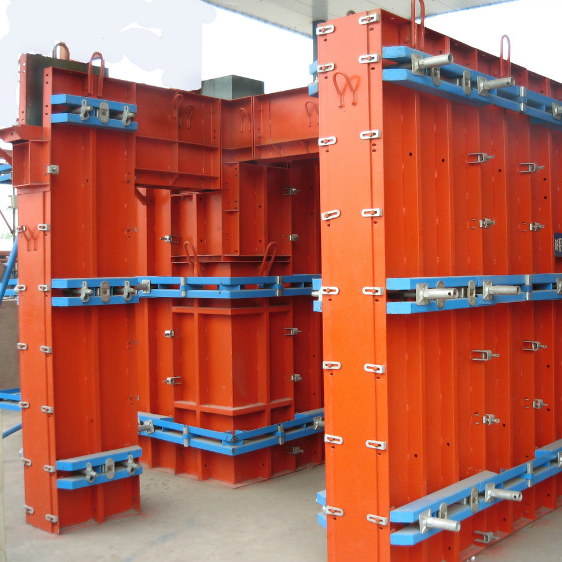
Steel can also be used as formwork material. It is very costly but it can be used for more times than others. They provide an excellent finish to the concrete surfaces. For mass structures like dams, bridges, etc. steel from work is so strong and safe.
3.1 Advantages
- Steel forms are durable and stronger.
- Provides uniform and smooth surface finish to the structure.
- Great reusability.
- Easy to fix the formwork and also easy to dismantle.
3.2 Disadvantages
- Cost is very much higher.
- It is heavy in weight and requires lifting equipment for large structure formworks.
- Corrosion will occur when there is frequent contact with water.
- The size and shapes of forms available are limited.
4/ Aluminum
Aluminum formwork is used often for pre-fabricated formworks. It is getting more popular because of its lightweight and good strength. It requires fewer supports and ties.
4.1 Advantages
- Easy to fix and easy to dismantle.
- It can be handled easily because of its lightweight.
- It can be re-used for many times.
- The walls and slabs of structures can be casted simultaneously.
- Monolithic crack free structures can be built using aluminum formwork.
4.2 Disadvantages
- When the load reaches its maximum limit, the lighter sections may deflect.
- Architectural modifications are not possible when aluminum formwork is used.
5/ Plastics
Plastic is another type of formwork material that is used for small concrete structures or for complex portions of the structure. It is light in weight and durable for long periods. For complicated concrete structures, Glass-reinforced plastics (GRP) and vacuum-formed plastics are used.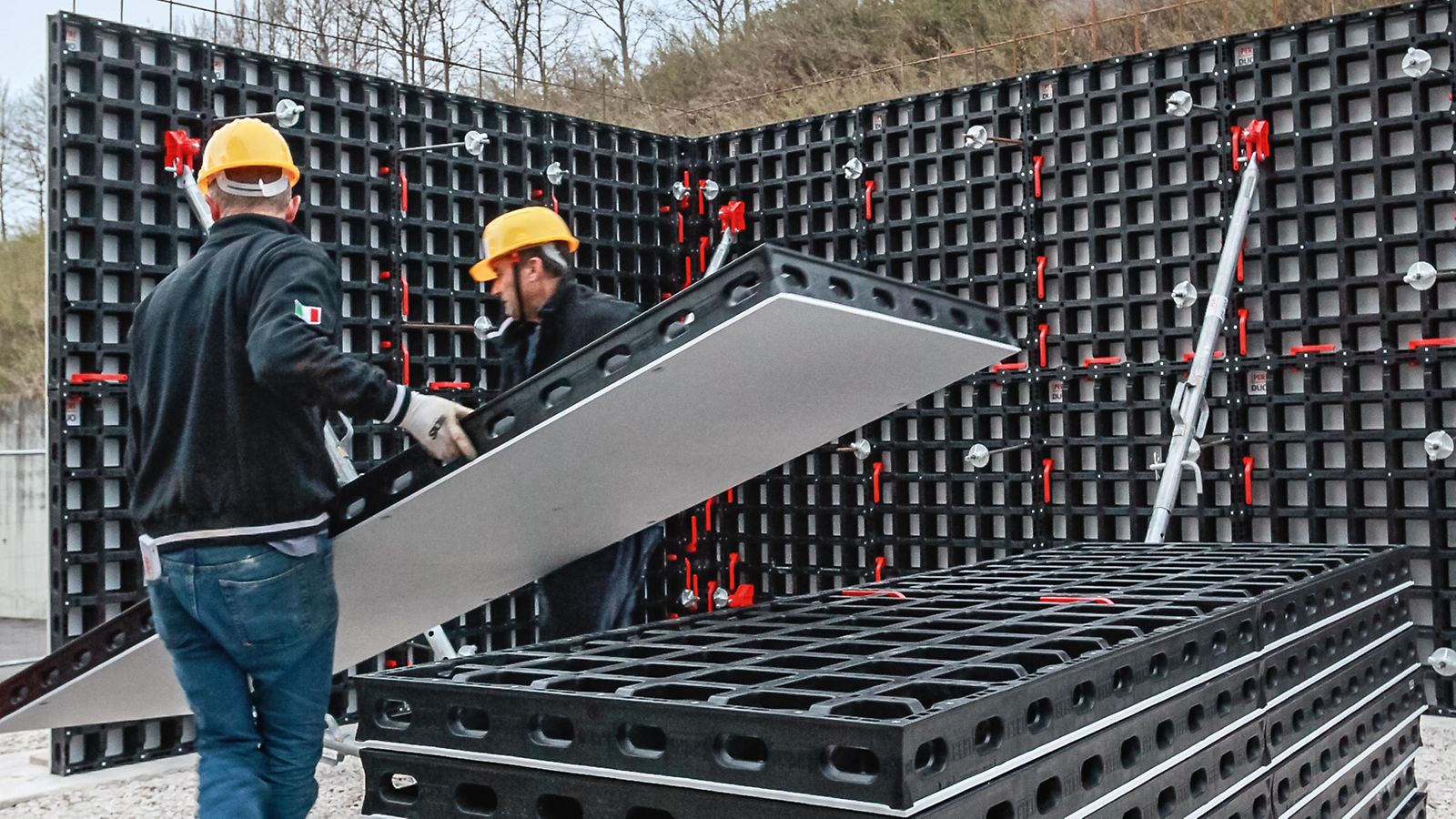
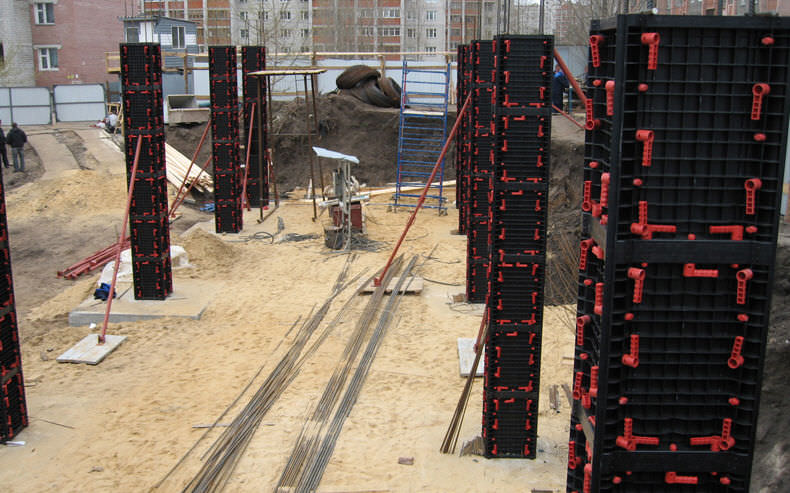
5.1 Advantages
- Plastic is light in weight and can be easily handled.
- Formwork for complex-shaped structures can be prepared easily.
- Good resistant against water.
- The damaged plastic sheets can be recycled and useful to make new sheets.
- Good quality plastic has great re-usability.
5.2 Disadvantages
- Plastic is weak against heat.
- It is a costly material.
- It does not take much load when compared with others.
II. FORMWORK RECOMMENDATION
1. Requirement of good formwork materials
- It must be capable to withstand all types of dead and live
- It is practically good to have a waterproof character so that it won’t absorb water from concrete.
- Entire formwork should be rigidly constructed and propped so that there should be no deformation in the shape and retain its original shape.
- Deflection and shrinkage should be minimum.
- The joins should be tight enough to minimize the leakage of cement grout.
- The formwork should be constructed with different segments. So that while removing the formwork it should not damage the concrete
- The material of the formwork should be cheap, easily available and should be suitable for reuse.
- The formwork should be set accurately to the desired line and levels should have plane surface.
- It should be as light as possible. So that it is easy to transfer and erect.
- The material of the formwork should not warp or get distorted when exposed to the elements.
-
H20 Timber Beam Enhanced with GPT-4-Turbo AI Design
NewsAug.01,2025
-
Premium Timber Beam H20 | Strong & Durable Construction
NewsJul.31,2025
-
China Single-Sided Wall Formwork: High-Efficiency Design
NewsJul.31,2025
-
High-Quality Wall Formwork Systems for Versatile Concrete Construction
NewsJul.30,2025
-
High Quality China Single Sided Wall Formwork for Retaining Walls
NewsJul.30,2025
-
China Single Sided Wall Formwork Manufacturer for Retaining Walls
NewsJul.29,2025